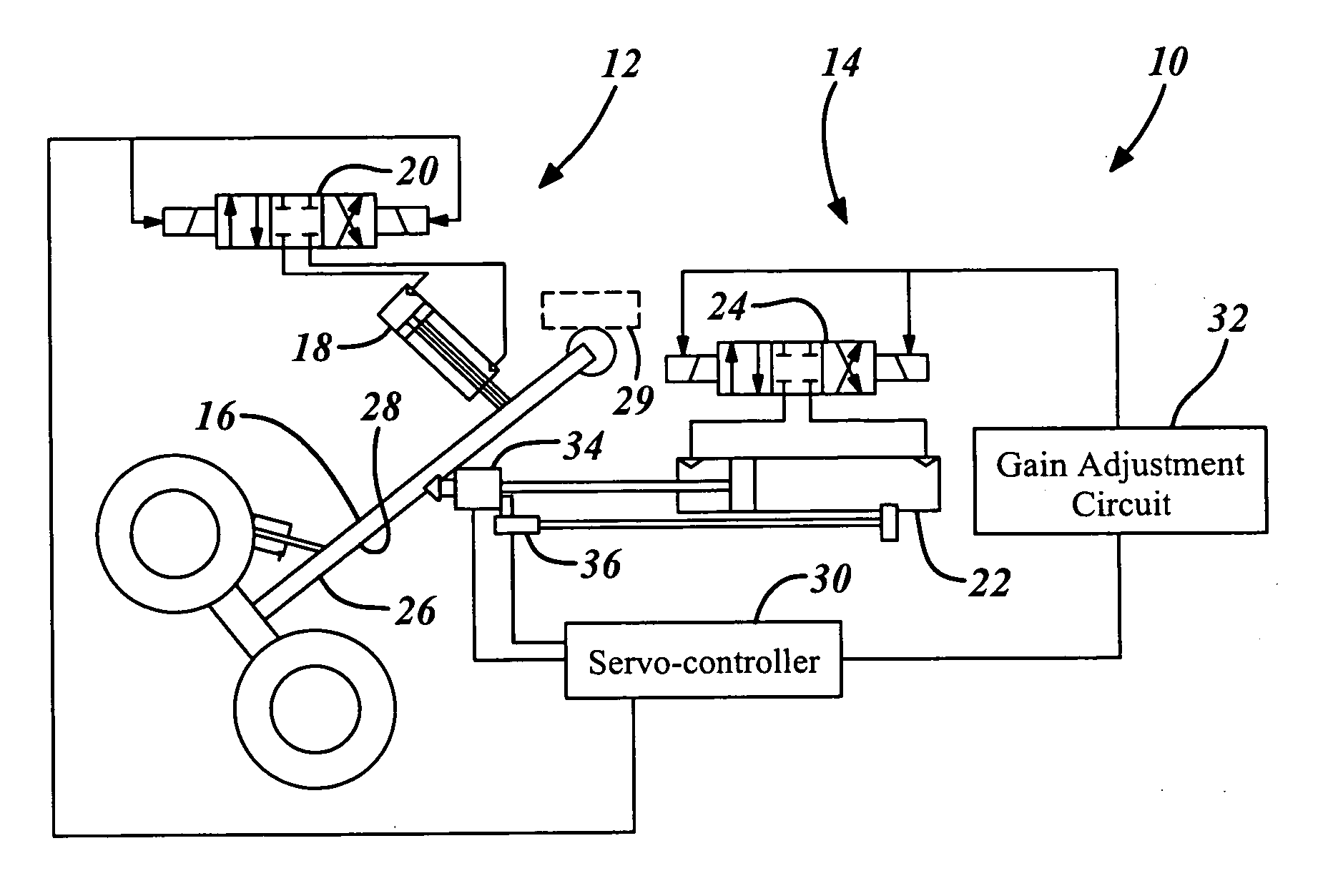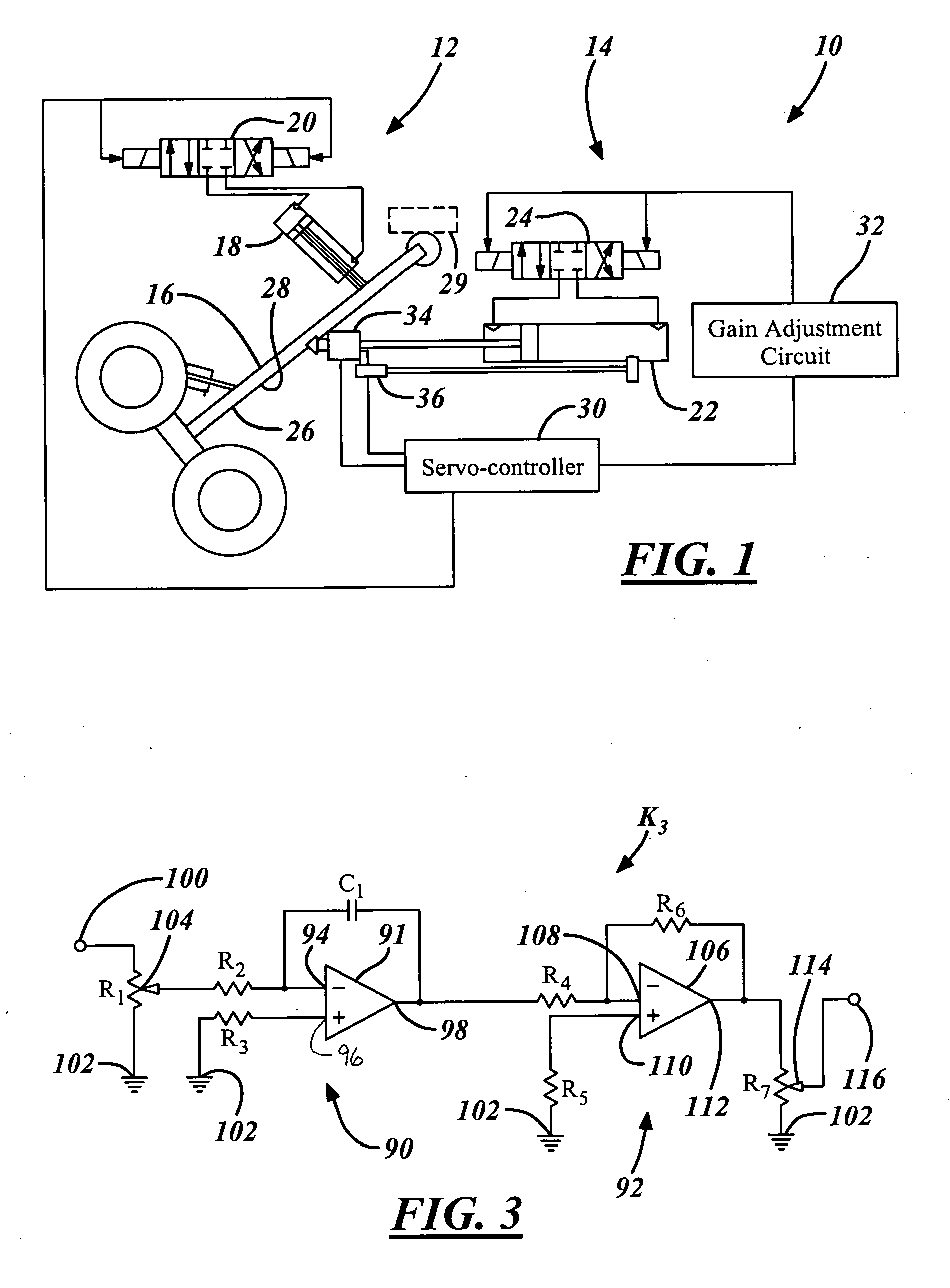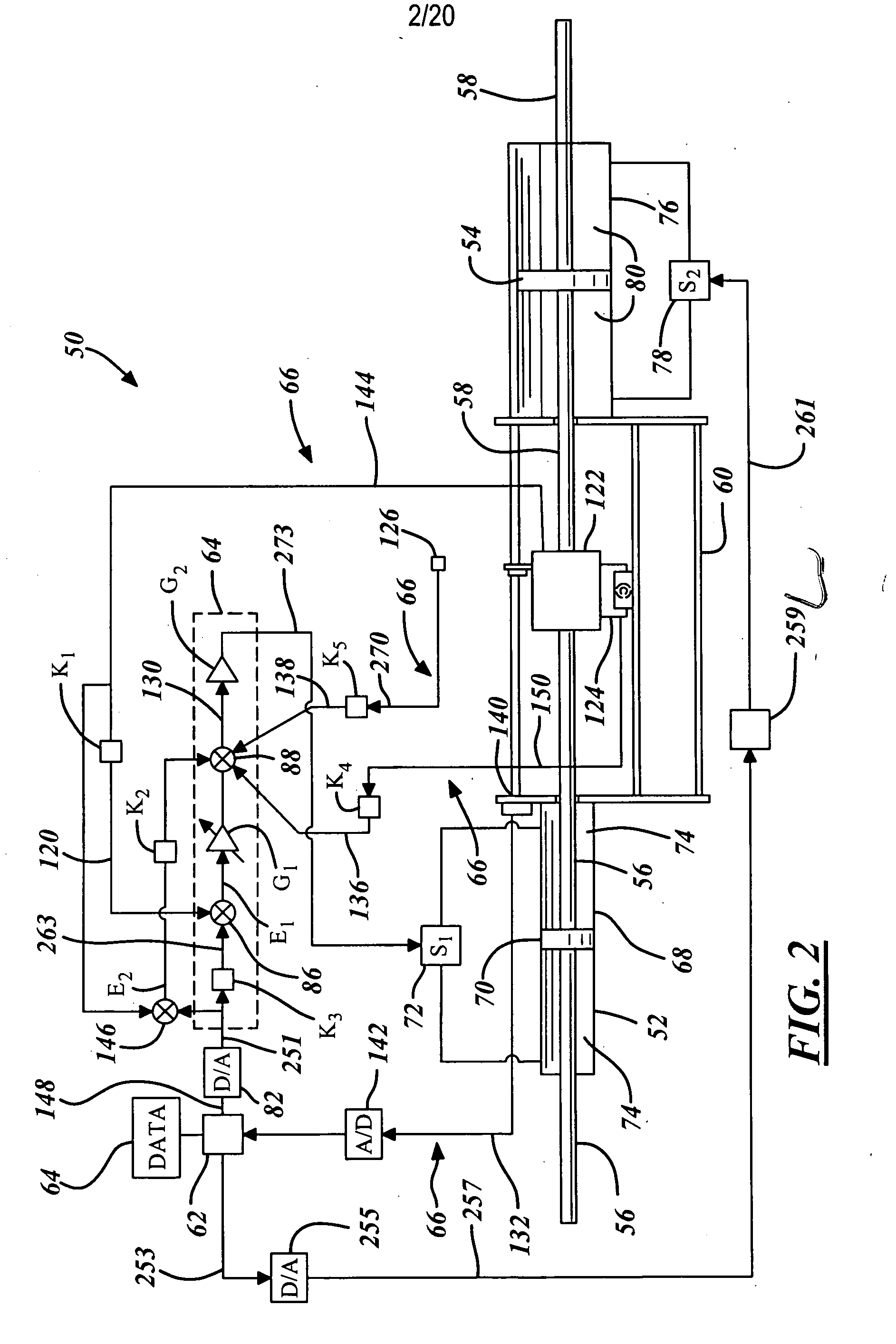Compliant coupling force control system
- Summary
- Abstract
- Description
- Claims
- Application Information
AI Technical Summary
Benefits of technology
Problems solved by technology
Method used
Image
Examples
Embodiment Construction
[0061] One technique of reducing force transients in a hydraulic powered system is to add a passive compliant mechanism between a servovalve and an actuator of a force control system. This technique uses accumulators on force actuator ports of the system. The compliance, however, lowers the phase margin of the hydraulic system. As a result, the instability reached using the stated technique while meeting increased gain requirements, limited the effectiveness.
[0062] Another technique used to reduce force transients in a hydraulic powered system is to increase the gain of a force control system. In order to increase the gain, and avoid instability, compensation is added to the control loop using numerous methods. These methods do not provide a substantive reduction in the amplitude of force transient phenomena.
[0063] Yet another technique used to reduce force transients in a hydraulic powered system is to add damping to a force control actuator by connecting the ports thereof throug...
PUM
 Login to View More
Login to View More Abstract
Description
Claims
Application Information
 Login to View More
Login to View More - R&D
- Intellectual Property
- Life Sciences
- Materials
- Tech Scout
- Unparalleled Data Quality
- Higher Quality Content
- 60% Fewer Hallucinations
Browse by: Latest US Patents, China's latest patents, Technical Efficacy Thesaurus, Application Domain, Technology Topic, Popular Technical Reports.
© 2025 PatSnap. All rights reserved.Legal|Privacy policy|Modern Slavery Act Transparency Statement|Sitemap|About US| Contact US: help@patsnap.com



